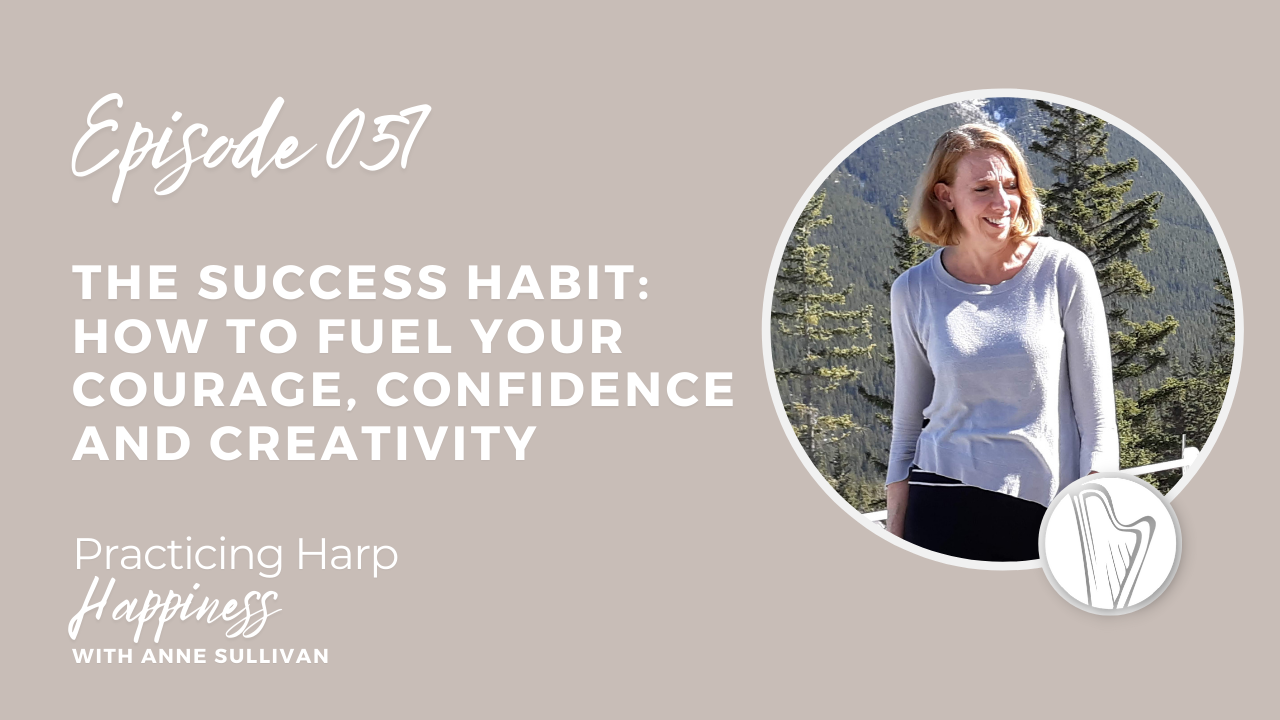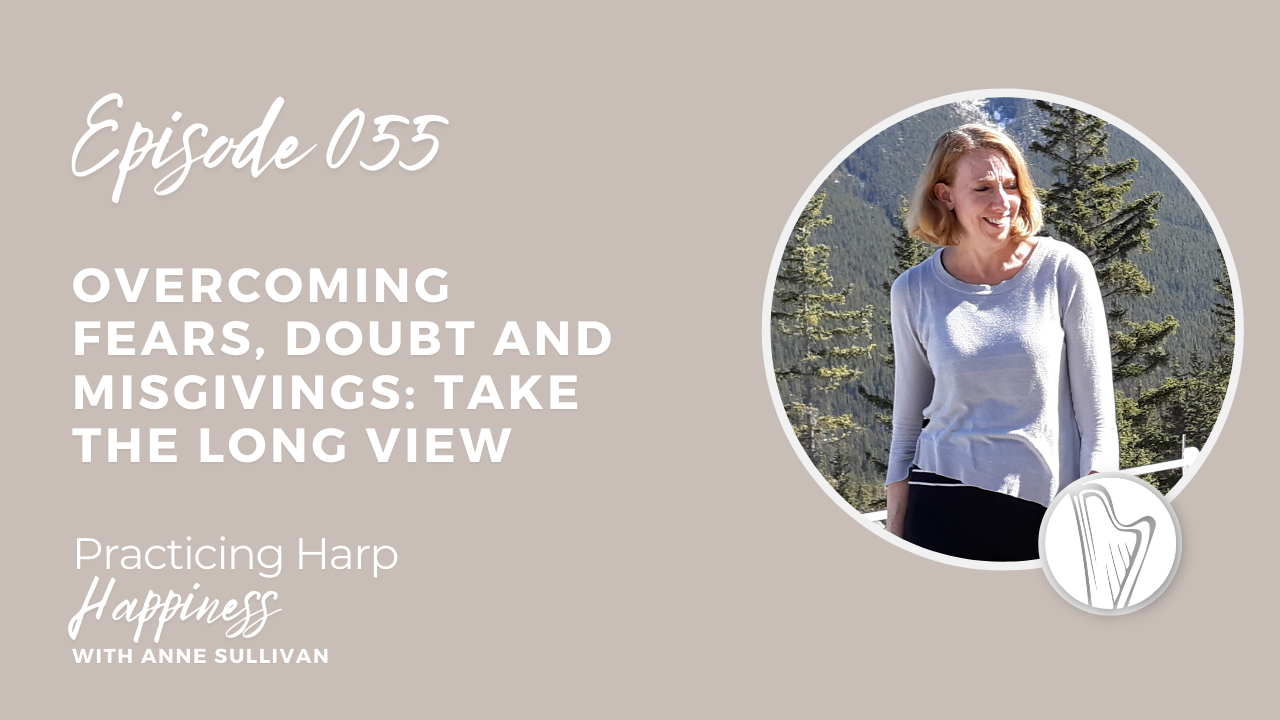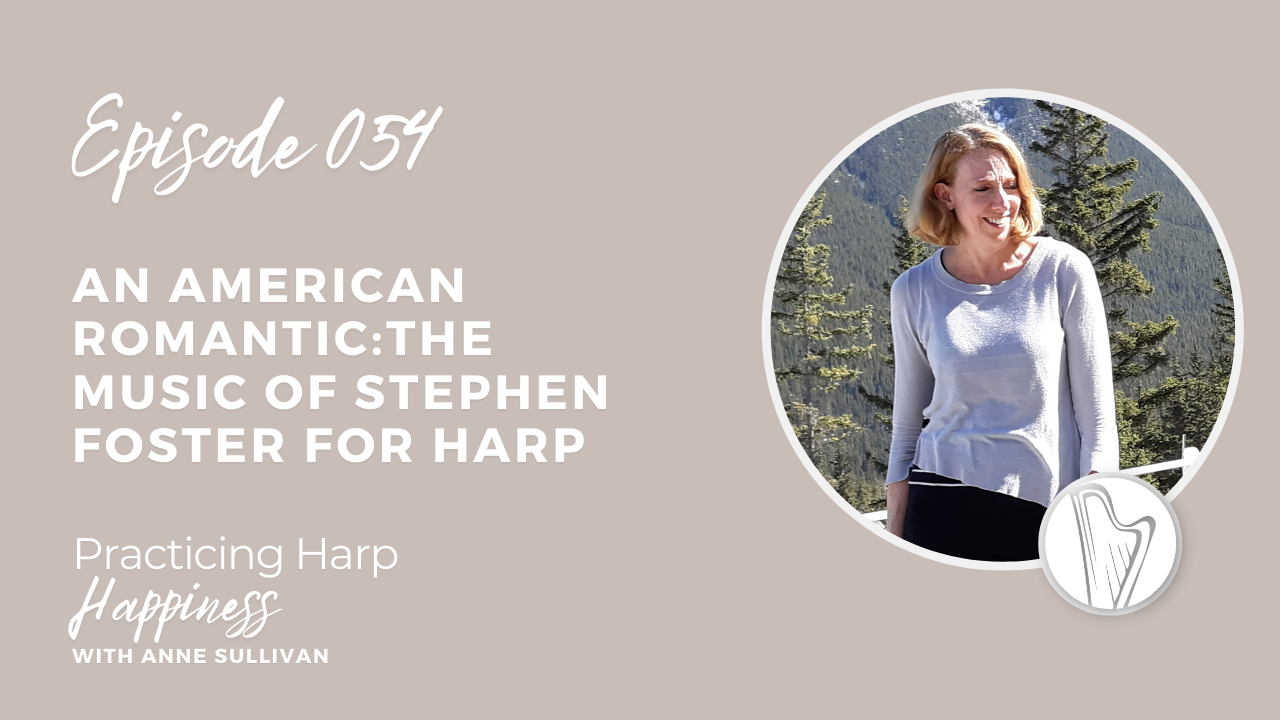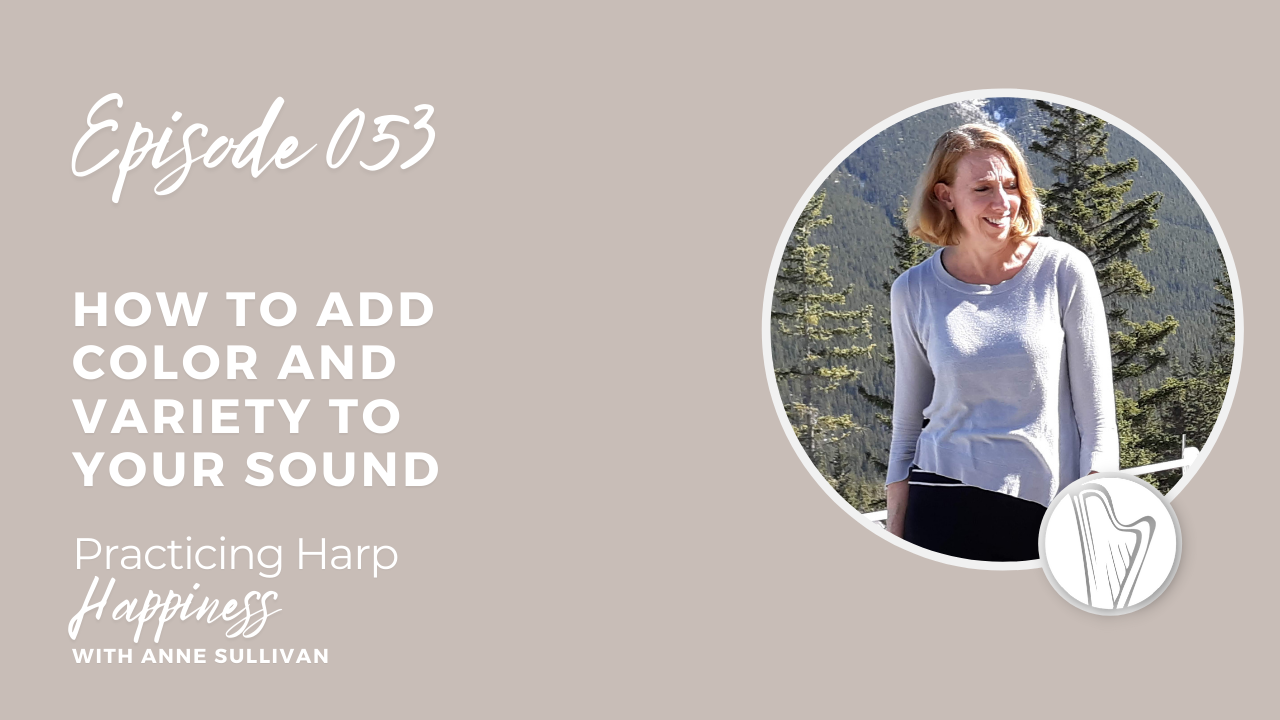Practicing Harp Happiness
#060: Enjoy a Guilt-Free, Harp-Free Vacation with the Perfect Re-Entry Plan

Summer is definitely here, at least where I live. The sun is shining, the grass is tall, the roadside vegetable stands are back in business. The bees buzz busily in the daytime and the fireflies make each night sparkle. It’s time for picnics and trips to the seashore. It’s also time to prepare for the end of summer, at least where your harp playing is concerned.
I could almost hear your mental brakes squealing. Summer’s barely started and we want to bask in every moment of it. Why should we think about the end of summer now?
Because a little bit of planning now will save you a couple of weeks later. Don’t believe me? Maybe this scenario will sound familiar.
Let’s pretend it’s late August or early September. Your vacation is over; it was terrific fun but you’re glad to be back home. Of course, there is a mountain of laundry to be done, and a stack of bills to be paid. The dog is acting weird since he came back from doggie camp (a.k.a, the kennel) and you think he needs to see the...
#059: Confused About Markings? 10 Common Harp Markings Explained!

If the fairy godmother of harp appeared today to grant you just one wish, what would it be? Would you wish for a new harp, flying fingers, an endless supply of music? I know what I would wish for: standardized harp markings.
That may sound to you as if I haven’t given this wish a lot of thought, but actually I believe if the harp fairy godmother would grant that one wish, it would save all of us harpists much time, confusion and frustration. Allow me to explain.
Harp notation is anything but standardized. Take a simple technique like a harmonic. Most composers write harp harmonics where they are to be played, which results in the note sounding one octave higher. But there are a few composers - Carlos Salzedo, most notably - who write their harmonics where the notes actually sound, meaning that we need to play them one octave lower than they are written. Many harpist composers explain which system they are using with a note to the performer printed on the music. Unfortunately, the ...
#058: Quick Fix Episode: Fixing 3 Common Thumb Issues

Today's episode is a brand-new podcast feature, a “Quick Fix'' episode. These are special episodes designed to take your harp learning out of the realm of the theoretical and get totally practical. It’s obviously not enough just to know why something is important, although that’s a great place to start. Sooner or later you have to actually do whatever it is, and for that you need to know how.
So from time to time here on the podcast, I’ll be sharing my favorite quick fixes, the nuts and bolts step by step instructions to put some of the things we’ve talked about - or that you’ve asked me about - into place in your harp playing.
The inspiration for today’s show was a comment I received in response to a podcast episode I did nearly a year ago, episode 14, about Taming the Terrible Thumb. On that podcast I talked about how your thumb should work, the proper mechanics and the reasons why those mechanics were important. But more recently I got a comment from a listener asking for more...
#057: The Success Habit: How to Fuel Your Courage, Confidence and Creativity

What is success when it comes to harp playing? And is it something you’re really interested in anyway?
Success is a loaded word. It’s easy to imagine success only in terms of applause, record deals and bouquets of flowers, even if we know that’s a Hollywood-style illusion. Even considering success from a more realistic perspective, you may not feel that success is what you’re looking for in your harp playing. Your goals may not include winning competitions or playing solo recitals or making CDs. I want to challenge your idea of success on today’s show, to show you how your success is more important to you than you may think and that it is the single most important factor in your harp happiness. If that sounds difficult, let me reassure you right now. It’s much easier than you think and quite possibly more rewarding than you have imagined.
I want to share a quote from Albert Schweitzer, a theologian and musicologist as well as an organist, and famous for his edition of the keyboard...
#056: Learning versus Practice: Which End of the Binoculars Do You Use?

I love silly jokes, and I hope you do too, because I’m going to share one with you now.
Here goes:
How do you catch an elephant?
You hide in some tall grass and make a sound like a peanut. When the elephant comes by you look through the wrong end of your binoculars, pick him up with a pair of tweezers and put him in a pickle jar.
Silly joke, right? But it’s appropriate for our show today. We are going to be talking about how we learn a piece or how we practice it, which may be slightly different. Then we’ll look at our music learning through the lens (hopefully through the right end of the binoculars) of big picture practice and little picture practice.
Let me ask you a question: if I asked you to tell me how you practice, what would you say? You’d probably describe your practice plan and if you begin hands separately or hands together, how many times you repeat a passage and how long you practice.
But if I asked you to describe how you learn music, what would you say? Would...
#055: Overcoming Fears, Doubt and Misgivings: Take the Long View

What have you done lately that was courageous?
I hope you shouted your answer, said it loud and proud.
Okay, now answer this one.
What would you have done recently if you hadn’t been so fearful?
That’s not exactly a “loud and proud” moment. But we all do it; we let our fears, our doubts, our nerves get the better of us.
Talk to any person who is super-successful in their field and they’ll confess to having their insecurities, their own sleepless nights worried about the decisions they’ve made or not made. Most people aren’t fearless. But successful people have learned that many times fear is the only barrier between their present and their future. Success comes only when they are able to go through the fear to discover what lies beyond it.
I often talk and write about how to find the courage and the confidence to share your music. You may call it “performing,” but at Harp Mastery® we call it ”sharing your music.” Whatever you call it though, you still might feel your palms sweating an...
#054: An American Romantic:The Music of Stephen Foster for Harp

Stephen Foster is often referred to as the “Father of American music,” or “America’s first songwriter,” neither of which is strictly true. However, Stephen Foster’s extensive output of songs and the strength of their popularity more than 150 years later attests to the powerful connection his music creates. The homespun appeal of his words and music evokes gentle images of family, home, love and longing that are in sharp contrast to his more difficult reality.
In fact, there were many ironical contradictions between his music and his life. His songs paint vivid pictures of life in the South, but Foster never lived there and only visited there once. HIs music was a staple in music hall minstrel shows, but Foster himself was an ardent abolitionist. His life came to a close not with the “Old Folks at Home” but alone in Bellevue Hospital in New York City.
Nonetheless, his music is filled with singable melodies, uncomplicated harmonies and a romantic sentiment that not only still touc...
#053: How to Add Color and Variety to Your Sound

My harp teacher could make any harp sound amazing. I was astounded every time I heard her do it. On the occasions when she came to my house and played my harp, her magical touch on my very ordinary harp brought it to life in a way my practice never did. And it was MY harp!
My teacher was Marilyn Costello. She studied with Carlos Salzedo at the Curtis Institute of Music and had a lifetime career as principal harpist with the Philadelphia Orchestra. And she had the warmest, richest, most liquid tone I have ever heard.
Having a beautiful tone wasn’t something I thought a lot about as a young harp student. I was more interested in playing fast and flashy pieces. I didn’t give much thought to having a rich sound. After all, when you're playing pieces at warp speed, who can hear the quality of your sound?
Obviously, tone matters. Like so many other harpists, it was the unique voice of the harp that first attracted me. The sound of the harp spoke to me when I heard it ring through the...
#052: Need a Fix? Try My Favorite Exercises!

There will never be a shortage of exercise books. As long as there are harpists, they will want to develop a more facile technique to make their playing easier, faster, more fluid and more musical. Scales and arpeggios will always be staples of our technical work but obviously, there is so much more that goes into harp technique. And with the plethora of choices of exercise, etude and method books, where does a harpist start?
The short answer to that question is to just start; it doesn’t really matter where. Any technique growth is better than none. A steady progression of skills is even better, of course. Again the simple solution is a good one; work your way through any exercise book beginning to end and you will cover most of what your fingers need. When you’re finished with that book, choose another.
There are some technical issues, though, that are very common and yet are often resistant to the usual approaches. On today’s episode of the podcast, I want to discuss a few of t...
#051: Get Out of Your Own Way: The Story of the Sacrificial Leaf

Are you trying to do too much?
As a harpist or harp student, it’s easy to feel overwhelmed. There is so much music to learn, so many skills to develop, so much technique work you need to do and not nearly enough time to do it all.
If this sounds distressingly familiar, I have good news and bad news.
The good news is that this is totally fixable. The bad news is that only you can fix it.
Don’t give up yet though, I do have powerful suggestions and advice for you today that will help you figure out what is really important for you to practice and what isn’t. My guess is that about half of what most of us practice daily isn’t really essential or helpful. That’s a scary idea!
Stop for a moment and imagine the implications of that. It could very well be that you’re spending an hour of practice and getting only 30 minutes worth of results. You think you’re using your time well, but you may be doing too many repetitions or warming up for too long or trying to learn too many pieces ...

